SPEAK TO THE WIFE NICE BIRTHDAY COMING UP SOON (YA I CAN DREAM)
Merida Warp TT
By Hannah Bussey; Photos by Andy Jones
10-Feb 2013
Lampre-Merida Warp TT bike
Nothing concentrates the mind more than the sponsoring of a WorldTour team and having no suitable bike on which to ride the inevitable time trial. When Merida linked up with the Lampre team this season, they set about designing a WorldTour-worthy time trial machine to fill a gap in its model range - the 2014 Merida Warp.
Key Grand Tour and UCI team time trial (where the previous Lampre-ISD team finished a disappointing 28th) disciplines have been the focus of Merida since May last year, and the fruit of its labour was officially launched on Saturday in Majorca.
Although a time trial model has been kicking about at the back of the Merida catalogue for a while - billed as a triathlon bike - this new model is completely different and all that remains is the name.
Taking design cues from other top time trial bikes such as the Specialized Shiv, Scott Plasma, Trek Speed Concept, Cervélo P5 and BMC TM01, Merida now claims to have developed the fastest time trial bike - in a wind tunnel with a zero yaw angle.
Concluding that the biggest aero savings are made at the front end, the Warp's unique selling point is a cockpit with as many integrated adjustments as possible to ensure all riders achieve an optimum time trial position with minimal drag increase.
We first saw the Warp under the Lampre-Merida team at the Tour de San Luis in January, albeit with Shimano 10-speed rather than 11-speed due to production delays. We've now got our hands the final team issue Warp belonging to Lampre-Merida's Manuele Mori.
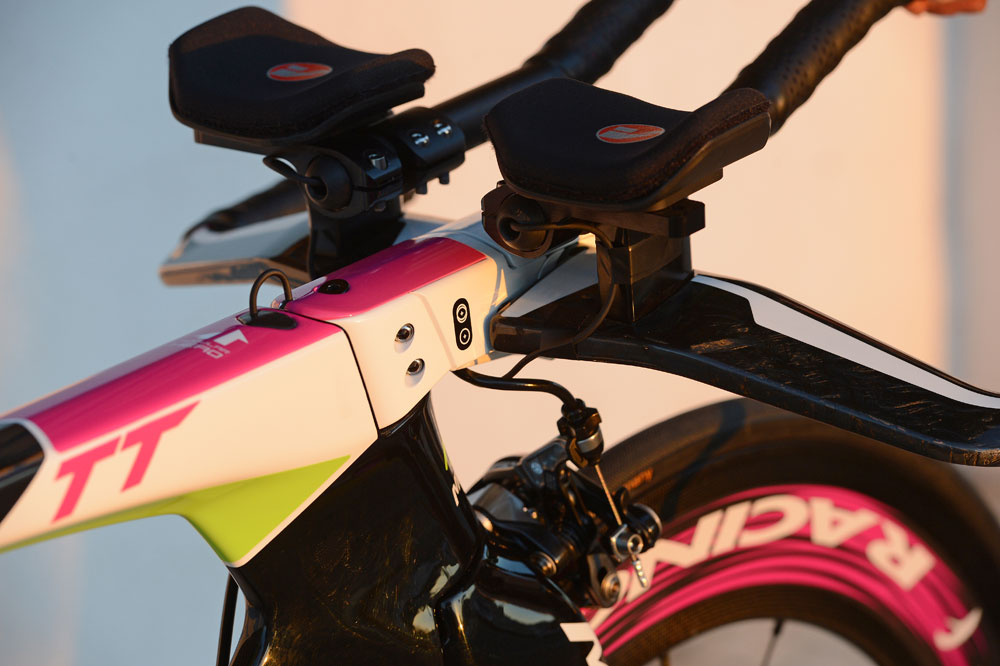
The stem can be adjusted between 90, 100 and 110 thanks to an internal shim.
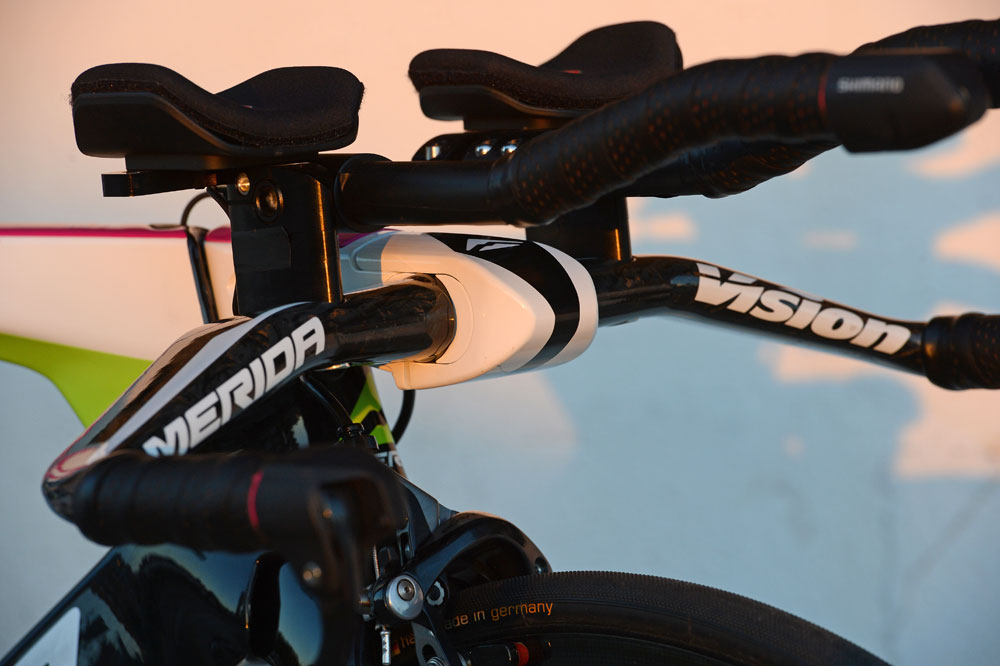
The Time trial extension height can also be varied between 5mm to 100mm with minimal impact on the overall aerodynamics.
Rather than using the traditional spacer system, Merida have managed to bypass problems with loss of stiffness by effectively extending the headtube height. Mounting the bearings within the Stem has allowed stiffness and steering control to be retained. This ‘Modular Head System' gains between an additional 30-60mm of headtube height.
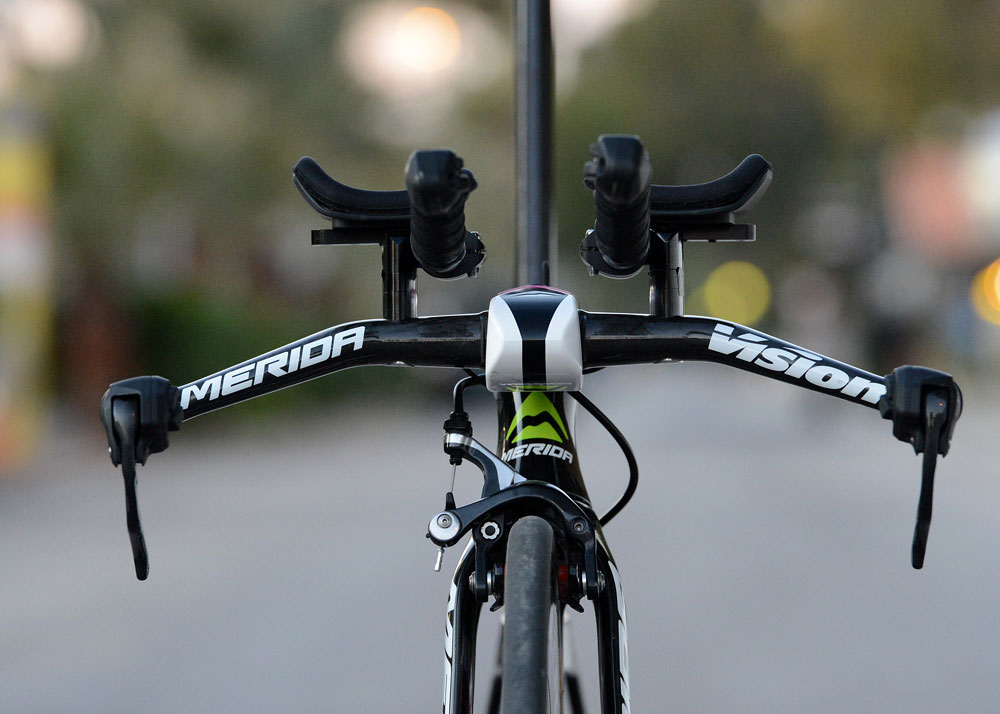
Two versions of the FSA/Vision bars will give riders a choice of flat or sloping, offering a height variation depending on rider needs.
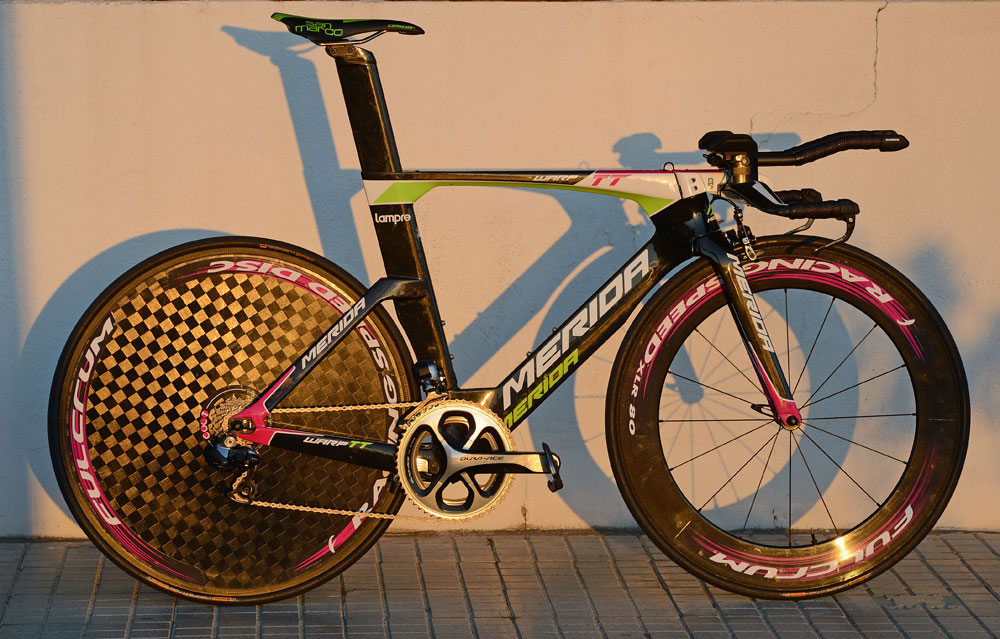
Wide forks akin to Team GB Sports Institute track bikes used at last summer's Olympics. This also allows the use of the wider 25mm tyres when necessary.
According to Merida, the position of the front brake caused as little as 1.5watt gain/ loss (in a wind tunnel with zero yaw). While the aero Magura RT8 brakes are considered superior, the decision of what to run was left to the team riders, who decided to stick the consistency of Shimano brakes, also allowing the ability to shift and brake from the same position.

The back brake however is neatly tucked away.
The battery is also neatly tucked away in the seat pin - the only cabling on display is from the stem to frame.
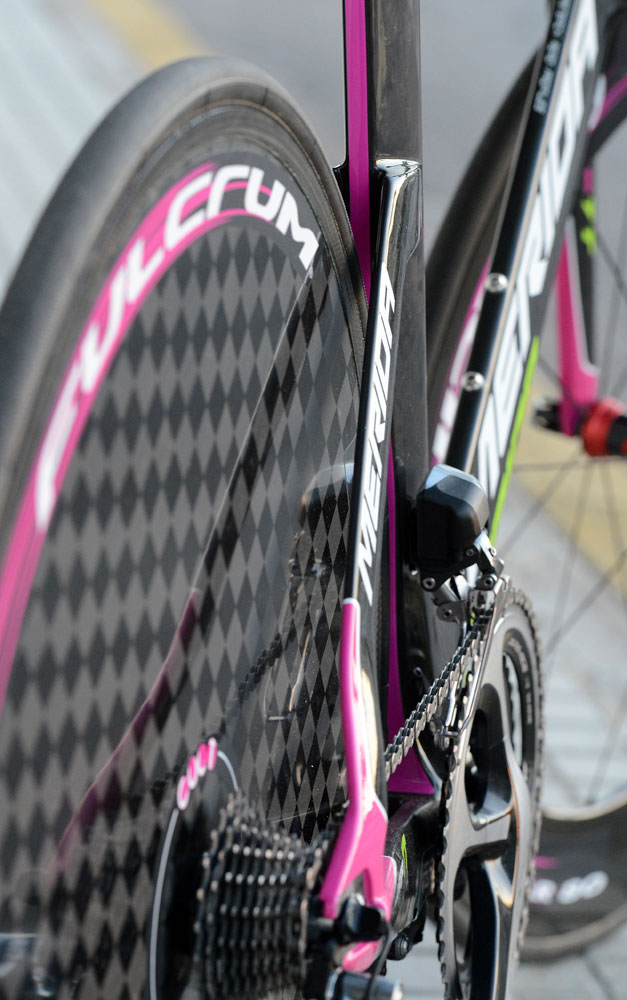
As enough 11sp Di2 has arrived, team Warps can now be built up with to final specifications, Mori's with an 11-23 cassette.
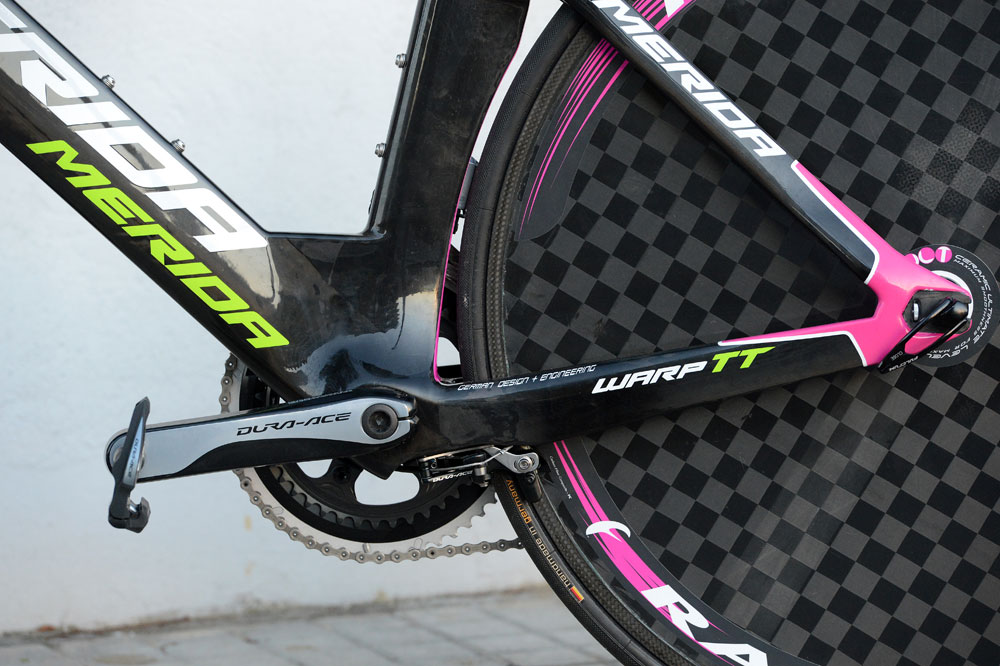
Team bikes will be normally be equipped with Fulcrum Racing Speed XLR 80s and/ or Racing Speed Discs, shod in Continental Competition Pro Ltd 23mm tubs.
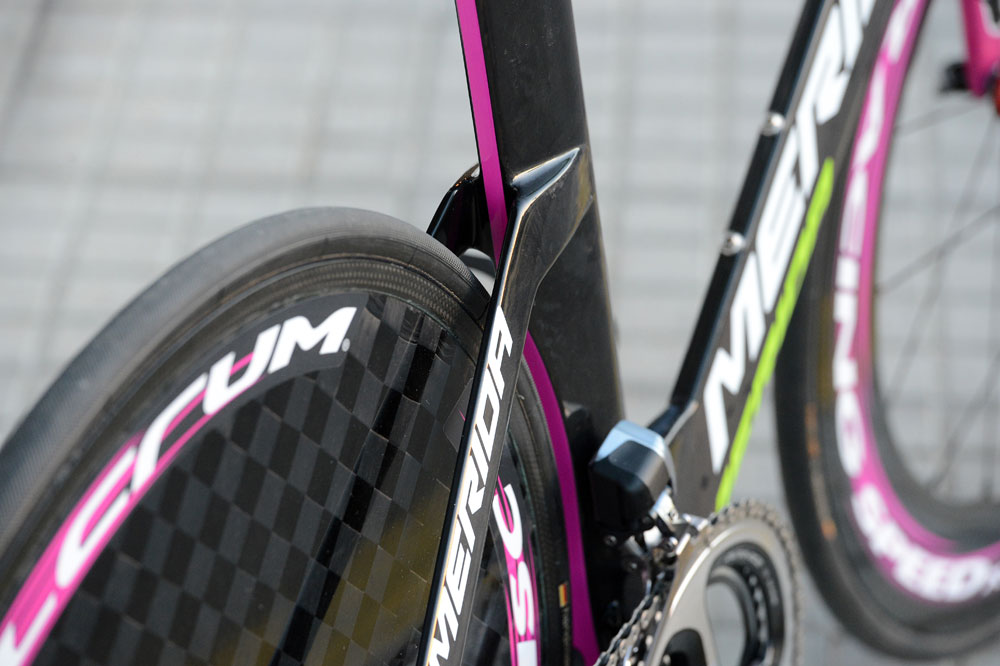
Team bikes are close to production versions, just beefed up to add weight - approximately 6.7kg with wheels, bottle cages, SRMs, It's also strengthened the down tube to make it less vulnerable when on car roofs and the area around bottle cages to deal with the constant slamming in of bottles.
No comments:
Post a Comment